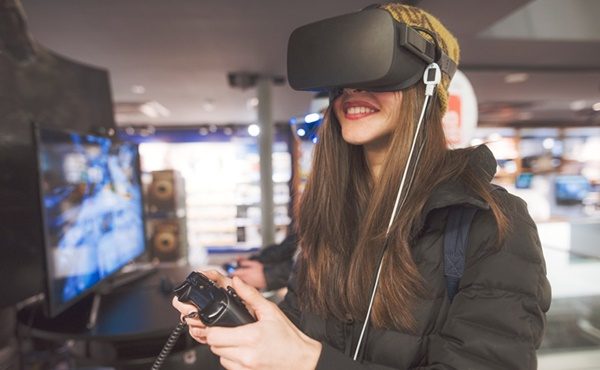Retailtainment is a rising trend retailers can’t ignore. While mobile commerce (often called mcommerce) may have begun as a convenient way to shop on demand, it has rapidly developed into an entertainment experience, otherwise known as ‘retailtainment’, according to a recent study from PayPal Australia.
This social shift is not only changing the way retailers engage with mcommerce, but also their expectations for the mobile shopping experience.
As online shopping becomes a favourite pastime for many youngsters, this shift towards entertainment represents an opportunity and a challenge for the retail sector.
To respond to this, many retailers have invested their time and money to incorporate the ‘fun factor’ and make online shopping enjoyable and an engaging experience for customers with hopes of luring both new and returning customers.
As a result, we are seeing more and more retailers experiment with next-generation technologies such as apps, augmented reality (AR) and voice assistants. Although these new next-generation technologies are an important part of customer engagement, retailers need to ensure they have the basics right and that their websites are built and optimised for mobile first, as well as with
The PayPal study shows that almost half of Australian retailers have not optimised their websites whilst two-thirds (67 per cent) of smartphone users browse retail mobile sites for fun without a purchase intent. Whilst there is a rich seam of innovation around ecommerce, arguably retailers will drive far higher performance by having an engaging mobile-first optimised experience. As a result, this opens a room for retailers to fully embrace mcommerce as there has never been a better time to leverage the power on mcommerce in its broadest form.
To take advantage of the 46 per cent shoppers that are ‘window shopping’ on their mobiles, retailers must start by taking a moment to reassess their mobile offerings, making sure they don’t lose sight of the basics like demonstrating good value and having great products. In addition, they need to reimagine customer experience and interaction including offering alternative functionalities such as one-click ordering and mobile friendly payment options, to improve the customer journey.
According to a recent report from MuleSoft, only half of consumers (50 per cent) believe that retailers provide a personalised experience (i.e. knowing their preferences across all channels and targeting them with relevant offers and promotions).
If retailers get personalisation right, consumer engagement rises, usually followed by a greater share of customers’ wallets. Nearly a third (32 per cent) of consumers said that they spend more with a retailer that provided a personalised experience than with one that didn’t, strengthening the argument for an investing in technologies that enable retailtainment experiences.
It is critical for retailers that their digital sites are intuitive, easy to navigate and engaging. Whilst many retailers have mcommerce capability presently, forward thinking retailers are enhancing their existing investments in mobile to drive better cross device experiences including the use of responsive design and app based experiences to improve mobile engagement and conversion.
In summary, consumers now have an unparalleled level of convenience when it comes to mobile shopping, allowing them to make purchases at any time, from any place.
Therefore, retailers’ need to focus on improving the customer journey by offering functionalities that create a highly personalised, highly intuitive shopping experience for customers.
By fully integrating promotions, look-books, merchandising, sales and delivery into their eCommerce platforms, retailers can convert ‘retailtainment’ into sales.
By Andy Burton, CEO of Tryzens







